by Lisa Cooke | Aug 30, 2019 | 01 What's New, Records & databases
Not everyone was on vacation this summer. Genealogy companies and archives have been busy adding new records to their online collections.
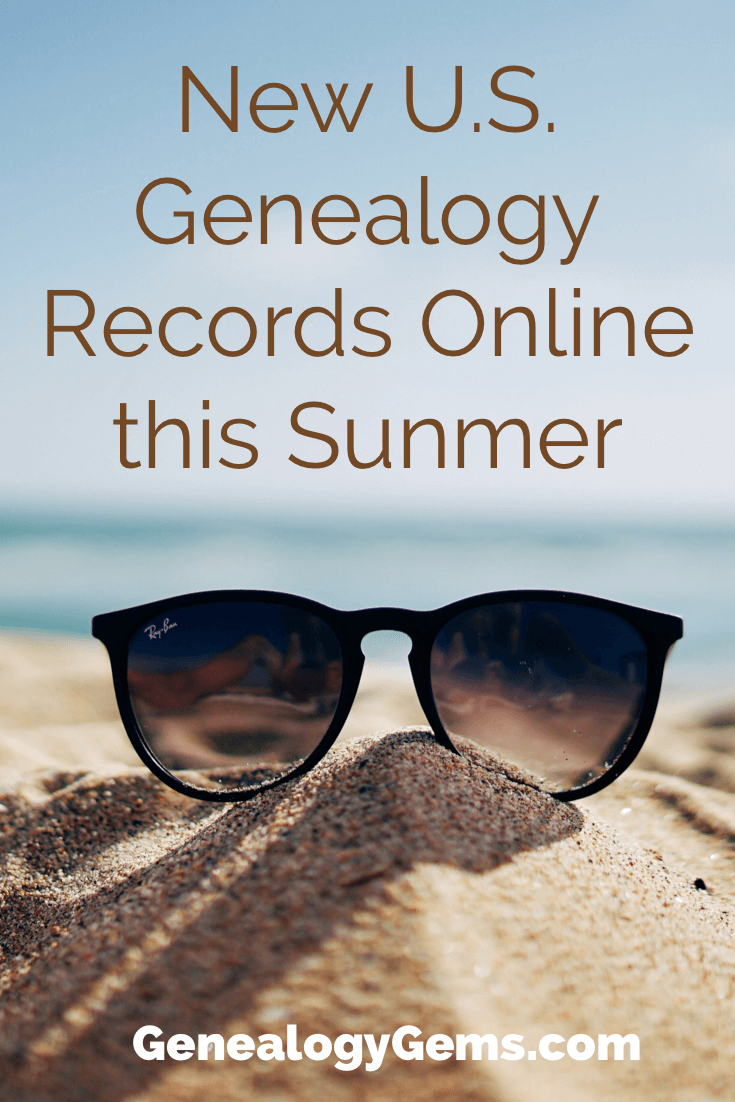
Mississippi Newspapers
In late July 2019 the Mississippi Department of Archives and History announced that “More than 238,000 pages of out-of-copyright Mississippi newspapers are currently online, with approximately 90,000 more pages expected to go online in the next six months.”
According to their press release: Researchers from around the world now have free online access to hundreds of Mississippi newspapers. The Mississippi Department of Archives and History (MDAH) participated in the National Digital Newspaper Program, a project funded by the National Endowment for the Humanities (NEH) to digitize newspapers across the country. The publications are accessible through the Library of Congress on its Chronicling America website, along with papers from other participating states.
“Primary sources are key for students because it makes history relatable,” said Al Wheat, MDAH director of education and co-coordinator of Mississippi History Day. “Every year we send students to the National History Day competition, which offers two prizes to students who made use of Chronicling America in their research. Instead of simply reading about a historical event, students can learn from the people who experienced that event through this exceptional website.”
MDAH has the most extensive collection of Mississippi newspapers in the state, housing more than 13,000 microfilm rolls of papers in its archival collections. NEH provided funding for the Mississippi digitization project through three, two-year grants.
Mississippi content includes titles published between 1820 and 1963 in fifty-three of the state’s eighty-two counties. Ninety antebellum titles, including papers published in Canton, Carrollton, Columbus, Holly Springs, Kosciusko, Panola, Port Gibson, Yazoo City, and Woodville, are online.
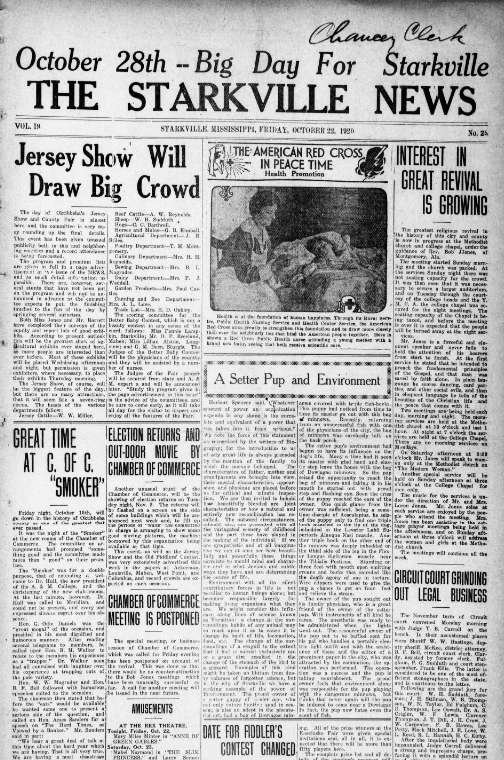
Twenty-three titles have at least one issue published between 1860 and 1865. Noteworthy Civil War-era titles include the American Citizen published in Canton, the Eastern Clarionpublished in Paulding, the Daily Clarion published in Meridian, the Macon Beacon, and the Oxford Intelligencer.
More than 100 newspapers document the Reconstruction era in the state through 1922. Included are titles from Aberdeen, Bay St. Louis, Corinth, Ellisville, Hernando, Liberty, Okolona, Philadelphia, Ripley, and Starkville.
A number of issues published between 1923 and 1963 will go online within the next six months. Included are several African American newspapers: the Jackson Advocate, the Southern Advocate published in Mound Bayou, and the Weekly Echo published in Meridian. Two newspapers that will go online won the Pulitzer Prize for Editorial Writing: the Lexington Advertiser edited by Hazel Brannon Smith and the Chronicle edited by Ira Harkey, Jr.
Access the newspapers for free at chroniclingamerica.loc.gov.
Another exciting free historical newspaper website!
Click the video below to watch:
Georgia Obituaries and Burial Records
The Madison GA Cemetery Stewardship Commission announced that the Madison Cemeteries website now has over 800 obits for our 4,000 burials, and they are adding more every day.
U.S. Genealogical Records at Findmypast
Pennsylvania, Oath of Allegiance
Did your ancestor arrive in Pennsylvania between 1727 and 1775 or between 1786 and 1808? This records hold the names of thousands of male immigrants who were required to take an oath of allegiance to the British Crown and the Province of Pennsylvania as well as immigration lists between 1786 and 1808. Within these pages you will find your ancestor’s name, the ship they arrived on, there and arrival ports, and arrival date. Names are organised by vessel.
All males over sixteen years of age were obliged to take this oath and declaration, as soon as after arrival as possible. The lists of foreigners arriving after 1786 including the names of wives and children. The full oath can actually be found on image number 9. An index to surnames begins on image number 675.
Pennsylvania Immigrants, 1727-1776
Explore this 1856 publication which, in its own words, is a ‘A Collection of Upwards Of Thirty Thousand Names Of German, Swiss, Dutch, French And Other Immigrants In Pennsylvania From 1727 To 1776: With A Statement Of The Names Of Ships, Whence They Sailed, And The Date Of Their Arrival At Philadelphia, Chronology.’
As well as names, these records may also provide you with historical and biographical notes. The prefece went on to add that ‘present descendants of the early German, Swiss and French immigrants, now numbering millions living in Pennsylvania, New York, Maryland, Virginia, and in the Western States, will be enabled, if they procure this publication, to ascertain the time of their ancestors’ arrival and other facts of value to most of them.’
United States, Passenger and Crew Lists has been created by merging all of Findmypast’s existing US passenger and crew lists with over 2 million brand new records covering Boston, Texas and South Carolina.
Spanning over 160 years of travel, this vast national collection brings together records of passengers and crew who arrived in America by ship or by plane, from the East Coast to the West Coast, between 1800 and 1964.
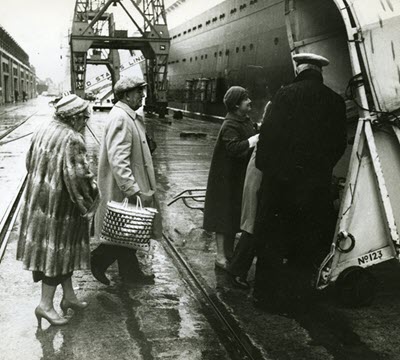
Passenger boarding in the 1950s.
Including ship manifests, crew lists, flight manifests, passenger arrival lists and more, the records document the arrival of millions of immigrant from Europe, Asia, and South America into the United States, where most settled to create a new life for themselves and their descendants.
A significant portion of the documents available within United States, Passenger and Crew Lists have been produced through a combination of historical records found at the National Archives & Record Administration (NARA) in Washington D.C. A number of the crew lists have also been made available by the Mystic Seaport Museum in Connecticut.
The collection also includes records provided in partnership with the John F Kennedy Trust Ltd, an organization which has worked with the Balch Institute, the Ellis Island Restoration Commission and the Battery Conservancy to compile a comprehensive database of Irish emigration to the United States.
Passenger lists are just one of many records that detail your family’s journey to the United States. Transcripts will reveal your ancestor’s birth year, birth place, place of arrival, arrival year and ship name.
Images will provide additional information such who your ancestor was traveling with, their occupation, last permanent residence, and the names of those who died during the voyage. On crew lists, you may discover your ancestors position on the chip, whether they were able to read or write, length of service, as well as a physical description.
United States, Passenger and Crew Lists
Over 777,000 new records from the major port city of Baltimore in Maryland have recently been added to these passenger and crew lists.
This national collection brings together records of passengers and crew who arrived in America by ship or by plane from the East Coast to the West Coast and will reveal where your ancestor was born, where they sailed from, where they arrived and when.
Billion Graves at FMP
Pinpoint your ancestor’s final resting place with new additions to our Billion Graves Cemetery Indexes. Our latest update includes:
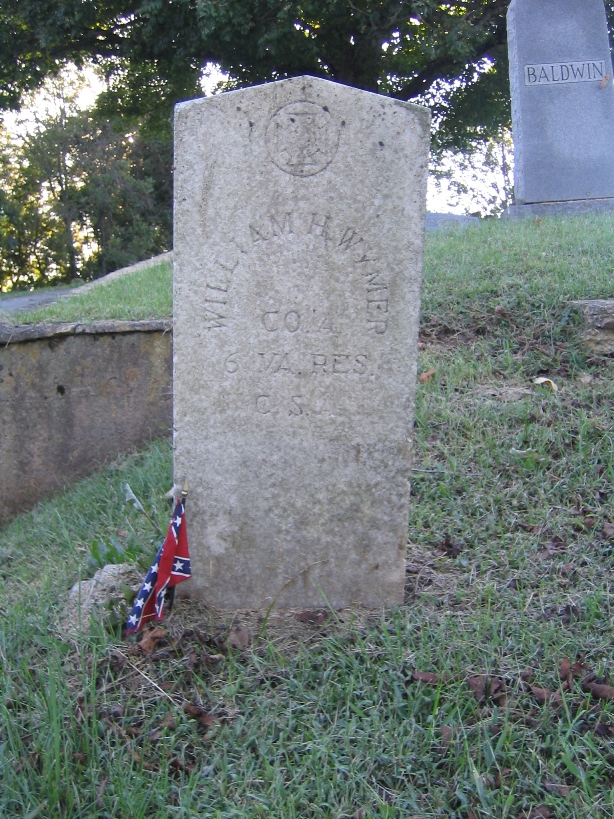
Tombstones are records too.
Cemetery records are of great importance in discovering where and when your ancestor died. They can also provide you with information regarding their birth and marriage dates.
With an abundance of cemeteries, it can be overwhelming trying to pinpoint the precise cemetery in which your ancestor was laid to rest, and visiting each potential location is costly. However, in partnering with BillionGraves, we aim to make available all the cemetery records held on their site for free, saving you time and money as you search for your ancestor.
BillionGraves is the largest resource for GPS-tagged headstone and burial records on the web, with over 12 million headstone records.
by Lisa Cooke | Apr 9, 2013 | 01 What's New, NARA, Records & databases, Research Skills
Beware: Personal Opinions are coming your way in this article!
In my book The Genealogist’s Google Toolbox I emphasize how to use Google to determine what is already available and free online before investing your limited time and money in offline family history searching. Smart genealogists allocate their resources wisely, getting the most bang for their buck. And collaboration between individual genealogists allows us to accomplish even more.
 It looks like the U.S. Federal Government could learn a thing or two from savvy genealogists. The Washington Times is reporting that Congress’s auditor has discovered that our tax payer money given to the federal government isn’t being spent very wisely. (Imagine that!) Agencies fail to collaborate and share information, creating redundancy and overspending.
It looks like the U.S. Federal Government could learn a thing or two from savvy genealogists. The Washington Times is reporting that Congress’s auditor has discovered that our tax payer money given to the federal government isn’t being spent very wisely. (Imagine that!) Agencies fail to collaborate and share information, creating redundancy and overspending.
One example from the article: the Commerce Department “has been charging other government agencies millions of dollars for reports that the other agencies could just as easily have gotten online, for free – often with a Google search.”
This news makes it even harder to swallow the news that the National Archives and Records Administration (NARA) is suffering reduced hours of service due to budgetary issues.
The Bottom Line:
Google Twice, Pay Once (and only if you have to!)
by Lisa Cooke | Nov 2, 2016 | 01 What's New, Native American |
Here are the step-by-step instructions you need to know to effectively navigate the Dawes Applications for Native American research. Many American families have a tradition of Native American ancestry. Now through Nov. 15, 2016 Fold3 has made access to their Native American records collections free. Read on to gain a thorough knowledge of how to properly use these records and achieve research success! And sign up for our free Genealogy Gems newsletter for our upcoming posts on this important subject.
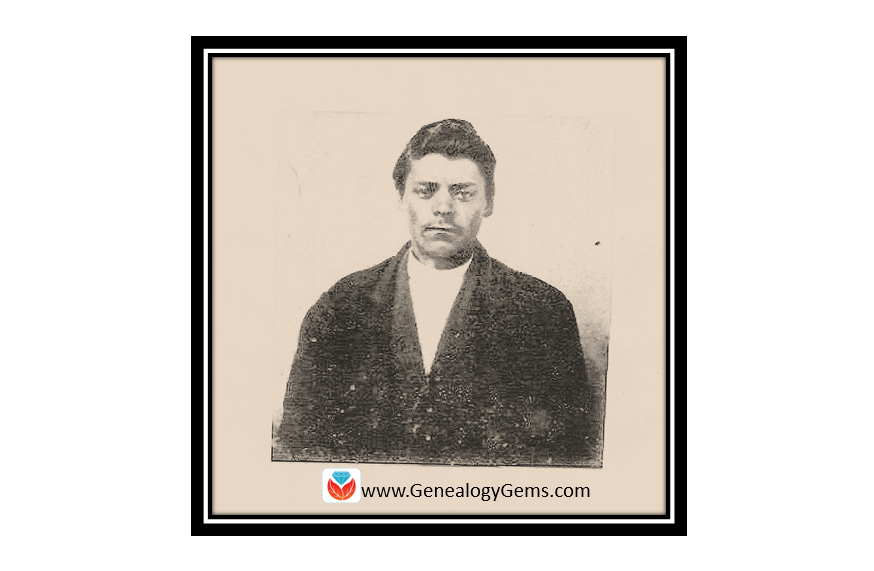
Dawes Applications for Native American Research
In 1893, an act of Congress approved the establishment of a commission to negotiate agreements with the Choctaw, Creek, Chickasaw, Seminole, and Cherokee Indian tribes. The commission became known as the Dawes commission. The commission was to divide tribal land into plots, which were then divided among the members of the tribe. The Commission either accepted or rejected applicants for tribal membership based on whether the tribal government had previously recognized the applicant as a member of the tribe. Applicants were categorized as Citizens by Blood, Citizens by Marriage, Minor Citizens by Blood, New Born Citizens by Blood, Freedmen (African Americans formerly enslaved by tribal members,) New Born Freedmen, and Minor Freedman.
Researching the Dawes Packets is tricky. One problem arises when researchers find their family members in an index and assume that means their family was a legitimate member of a tribe. That is not the case. You will find doubtful or even rejected applications as well.
The good news is that in applying, our ancestors provided lots of genealogically valuable details of their birth, residences, and family ties.
Let’s see how to use this special collection.
Dawes Packets are Listed By Application Number
It would take forever to go through the applications one by one to find your ancestor. You really need to check an index first, but Fold3 doesn’t have the index for the Dawes Packets collection available…at least as far as I have found.
Instead, I would suggest going over to Ancestry.com. There, click on Search and choose Card Catalog from the pull-down menu. In the keyword search at the card catalog, type in Five Civilized Tribes. This will give you the option of several databases, but the one we want to check first is the one titled “U.S., Native American Applications for Enrollment in Five Civilized Tribes, 1898-1914.”
Now, search for your targeted ancestor by name. In my example, I am going to search for David O. Scott.

The results indicate that David O. Scott appears in two entries. One entry gives the number of #9446 and the other is #616. I can view each of these records directly from Ancestry. The first image you see is a jacket cover, so just click the right arrow key to scroll through the digital pages contained in David’s file.
Remember, if you don’t have access to Ancestry.com, many local libraries and family history centers have free access for patrons. But, we are talking about using Fold3, so let’s pop back over there.
Go back to Fold3.com to access their Native American records. You will do this by clicking on Browse at the top of the Fold3 homepage. Next, scroll through the options and choose Non-Military Records. A new list of options will appear and you will click on Native American Collections, then Dawes Packets. The Dawes Packets that appear here on Fold3.com are first broke down into tribe, then by number.

David O. Scott’s search on Ancestry listed him as Cherokee, so I want to choose that tribe. One of his numbers was #616.

Did you notice the numbers have a “D” in front of them? These are the applications deemed “doubtful.” If you scroll down, the letter changes to “R.” These applications were rejected. We don’t know if David’s number 616 is in the doubtful category or the rejected category, so we will check both.
David’s #616 matches the D616 and now I know that his application was marked doubtful. David’s pages of information were packed with genealogical detail like family names, dates, and residences.
The 1896 Applications
Here’s another tip: Your ancestor may have applied in the first wave of applications submitted in 1896. Those applications were later deemed invalid and thrown out, but wow…you don’t want to overlook them! Whether your ancestor applied again in 1898 and you already found their Dawes Packet on Fold3, try looking at this collection as well.
The research center at the Oklahoma Historical Society webpage allows you to search the 1896 overturned applications index for free. I typed in the name of my third great-grandfather, Jacob Cole.

You can also search by tribe, however, I suggest you do not do that. Sometimes, individuals actually applied to more than one tribe because they were not sure which tribe they might belong to. By adding that criteria, you may miss your ancestor’s application all together.
Only one result appeared for Jacob Cole. On this result, you notice the tribe affiliation as Cherokee and the case/application number of 639. I will need that tribe and number to find the application at Fold3. [Note: As I mentioned earlier, this index does not tell me if Jacob’s application was accepted or rejected, but it really doesn’t matter because these applications were deemed invalid anyway.]
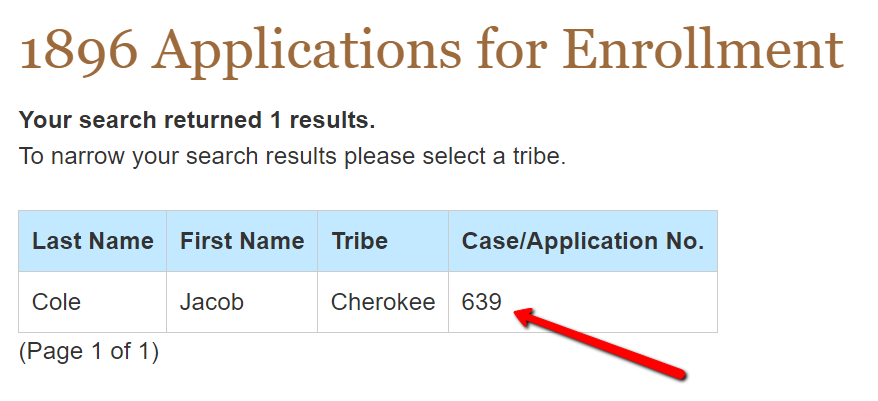
You won’t find Jacob’s overturned application of 1896 on Fold3 at this time, but it is available at Ancestry.
Where Can I find Overturned Applications for 1896?
Overturned applications from 1896 are still very valuable records. They can be found at the National Archives and Records Administration in Washington D.C., or at Ancestry.com.
Let’s look at Ancestry. Once at the homepage, click Search at the top, then choose Card Catalog from the pull-down options.
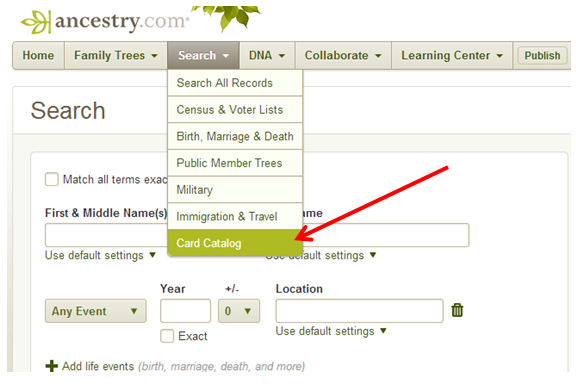 In the keyword field on the right, type in Five civilized tribes. You will see many options, but you want to click on the collection titled “U.S. Native American Applications for Enrollment in Five Civilized Tribes (overturned,) 1896.”
In the keyword field on the right, type in Five civilized tribes. You will see many options, but you want to click on the collection titled “U.S. Native American Applications for Enrollment in Five Civilized Tribes (overturned,) 1896.”

This next step is a bit tricky. You will be directed to a page that allows you to seemingly search for your targeted ancestor’s application. But, the search only searches an index for the applications. To find the entire application packet, you need to browse the microfilm by hand.
To do that, look over to the far right where it says Browse this collection. Choose from the drop-down menu which tribe your ancestor applied to…so, I will choose Cherokee Applications. Then, choose the roll number based on the application number of the packet. I can determine the correct roll number because Jacob’s application number was 639 and Roll 25 includes all applications between the numbers of 486 and 681.

Click ALL and a digital image of the microfilm pops up. You will need to browse image-by-image until you find your ancestor’s application number. Be patient. With more than 1800 images, it will take some time.
[Special Note: On the very last roll of microfilm, Roll 54, there are some miscellaneous files and applications that were received past the application deadline. These records were not included in the Master Index. If you did not find your targeted ancestor in the Master Index, check these miscellaneous records.]
I found Jacob’s application on digital image number 1405. His application packet was nine pages long. I learned the ages and names of his current wife and children, how he believes he is Cherokee through the blood of his grandfather, Hawk Bowman, and I read two witness statements about Jacob and his family.
In particular, because this record was made in the 1890s, I was able to learn of two daughters that I had never known about. Martha had been born after the 1880 census and married before 1900, never having appeared with her father in a census. The second daughter, Mary J., had been born in 1895 and died before 1900, also never appearing with her family in a census record.
More on Native American Research
We will be creating further blog posts regarding each of the Native American collection sets at Fold3.com. We want you to be able to take advantage of this awesome opportunity to view the records for free for this limited time. In the meantime, be sure to read this how-to post on using Eastern Cherokee Applications: Eastern Cherokee Applications for Native American Research
Disclosure: This article contains affiliate links and Genealogy Gems will be compensated if you make a purchase after clicking on these links (at no additional cost to you). Thank you for supporting Genealogy Gems!












 In the keyword field on the right, type in Five civilized tribes. You will see many options, but you want to click on the collection titled “
In the keyword field on the right, type in Five civilized tribes. You will see many options, but you want to click on the collection titled “


 awards break down:
awards break down: